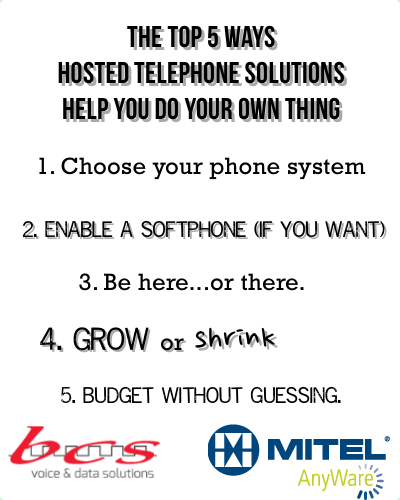Tips For Implementing a Telecommuting Program

When Yahoo CEO Marissa Mayer announced in February that Yahoo employees could no longer work remotely, the internet went up in flames with opinions over the change. Some applauded Mayer for her leadership decision while others saw it as a regression to a corporate ethic of long hours at the office and a disrupted work-life balance. We maintain that while a telecommuting program is not right for every company or every employee, it can afford a great deal of benefits across the board when implemented correctly.
Telecommuting in the U.S. grew 73% overall between 2005 and 2011 (Global Workplace Analytics, 2011). It is estimated that over 3 million American workers did at least part of their job from home in 2011.
Employers who run telecommuting programs report happier, more productive employees. Not only that, but telecommuting can help both businesses and employees save money by cutting transportation costs, office overhead and childcare expenses. It’s all part of the Work 3.0 culture we’ve discussed so thoroughly in the past.
Could telecommuting be right for your business? Take a look at these guidelines for developing a successful program.
Realistically assess your employees’ personalities and working styles.
While remote work is friendly to many company roles across a multitude of industries, understand that it simply isn’t for everyone. The ideal candidate is highly self-motivated, inquisitive and a team-player while in-office. If one or all of your employees don’t quite meet that criteria, a telecommuting program may fall flat.
Evaluate the tools you need to succeed.
Paramount to any functional telecommuting program is high-level communication between remote employees and the physical office. This requires special equipment that will vary in complexity based on the size of your business and its unique communications needs.
Two of the more basic necessary components are Unified Communications and video conferencing ability (check out Mitel UC360 for an amazing synthesis of the two). Both UC and teleconferencing enable instant productive collaboration between in-office employees and their telecommuting counterparts. It can also assist you in keeping them accountable.
Design a telecommuting policy and set the ground rules clearly.
How long must an employee work in-office before they can take advantage of the telecommuting option? How will you measure their work-time, breaks and overall productivity (weekly status reports, network monitoring, etc)? Are you liable for any at-home accidents during work hours?
These are just some of the elements of telecommuting that you need to consider, set in stone, and put in writing for your employees. Provide a mandatory in-office training session for all employees where you set forth company-wide expectations for telecommuters. When everyone knows the rules, they will feel more motivated to be part of the team.
Periodically evaluate productivity.
Like we mentioned before, you must set a standard procedure for monitoring the work activity of remote employees. Along with weekly status reports, an advanced Unified Communications suite is your best bet for ensuring that things stay business-as-usual whether your employee is down the hall or at their desk at home.
Stay on top of network security.
When employees are no longer under one roof during business hours, special attention should be paid to keeping the network, be it cloud-based or premises-based, safe and secure. 24/7 network monitoring, encrypted file sharing and the aforementioned ground rules can help make sure that your information stays protected.
Don’t rush into it.
As you can see, a telecommuting program brings with it a number of concerns and considerations that go beyond sending your employees home and hoping they continue to get things done. Take the time to plan, acquire the necessary technology and prepare your staff accordingly before jumping in.
BCS has the expertise and technology to facilitate a successful telecommuting program for your business. Whether you need Unified Communications, teleconferencing equipment or network monitoring, call or contact us today.

